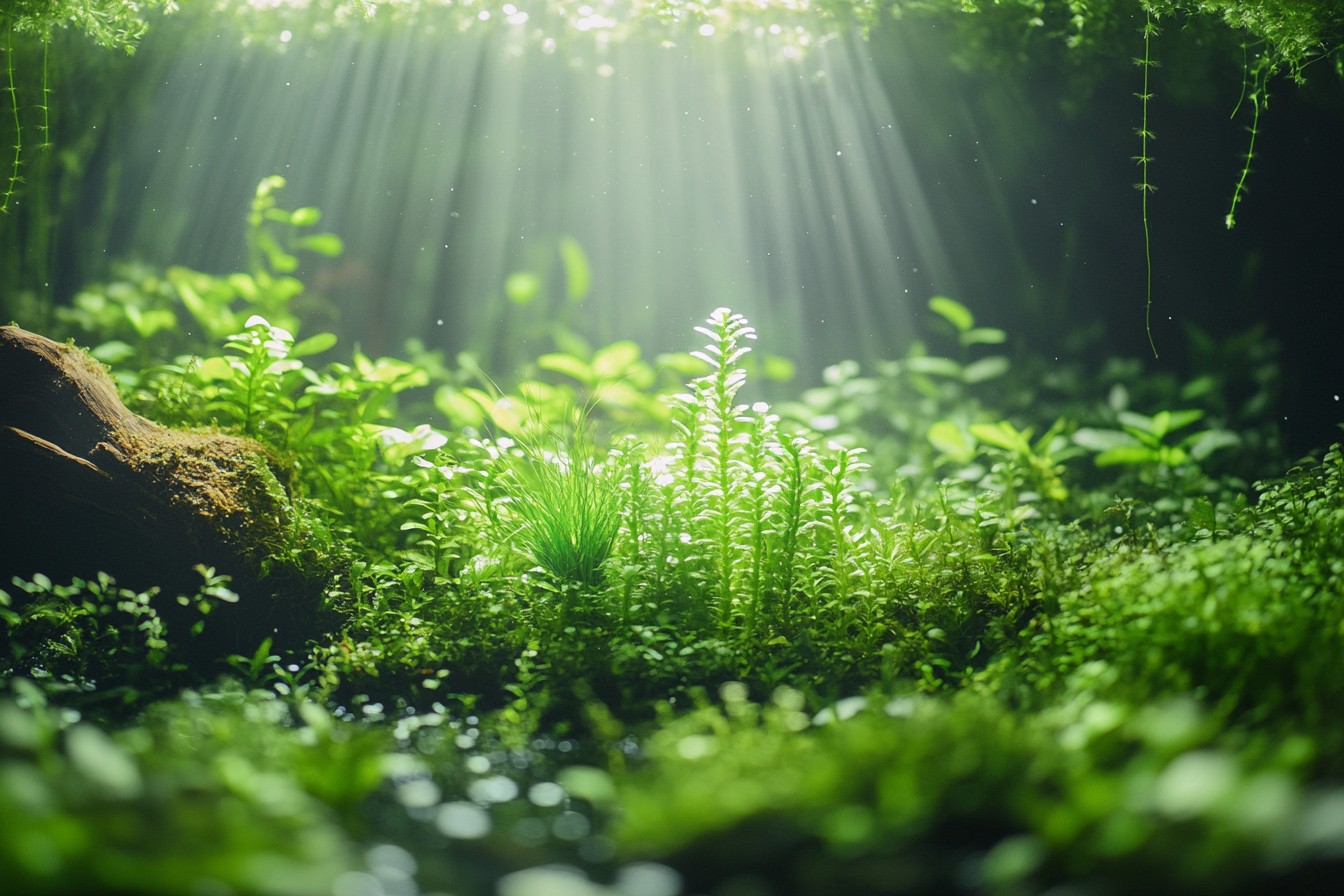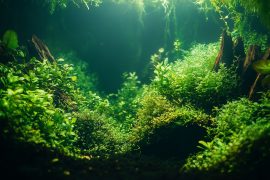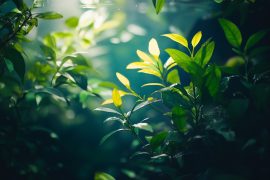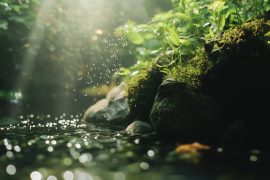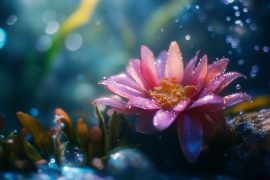Last summer, I found myself belly-down in mud at the edge of the Florida Everglades, my camera just inches from the water’s surface, trying to capture the exact way sunlight filtered through the cypress knees. My hiking buddy—more sensibly situated on dry land—asked why I didn’t just “look at pictures online” for my next tank design. I tried explaining that pictures never capture the full sensory experience: the way different plants grow in relation to each other, how they respond to water flow, the subtle color variations that stock photography inevitably enhances to unrealistic degrees.
He nodded politely while checking my legs for leeches. That’s the thing about creating authentic biotope aquascapes—they demand firsthand observation whenever possible. You simply can’t replicate the breathtaking complexity of natural ecosystems without understanding how they actually function.
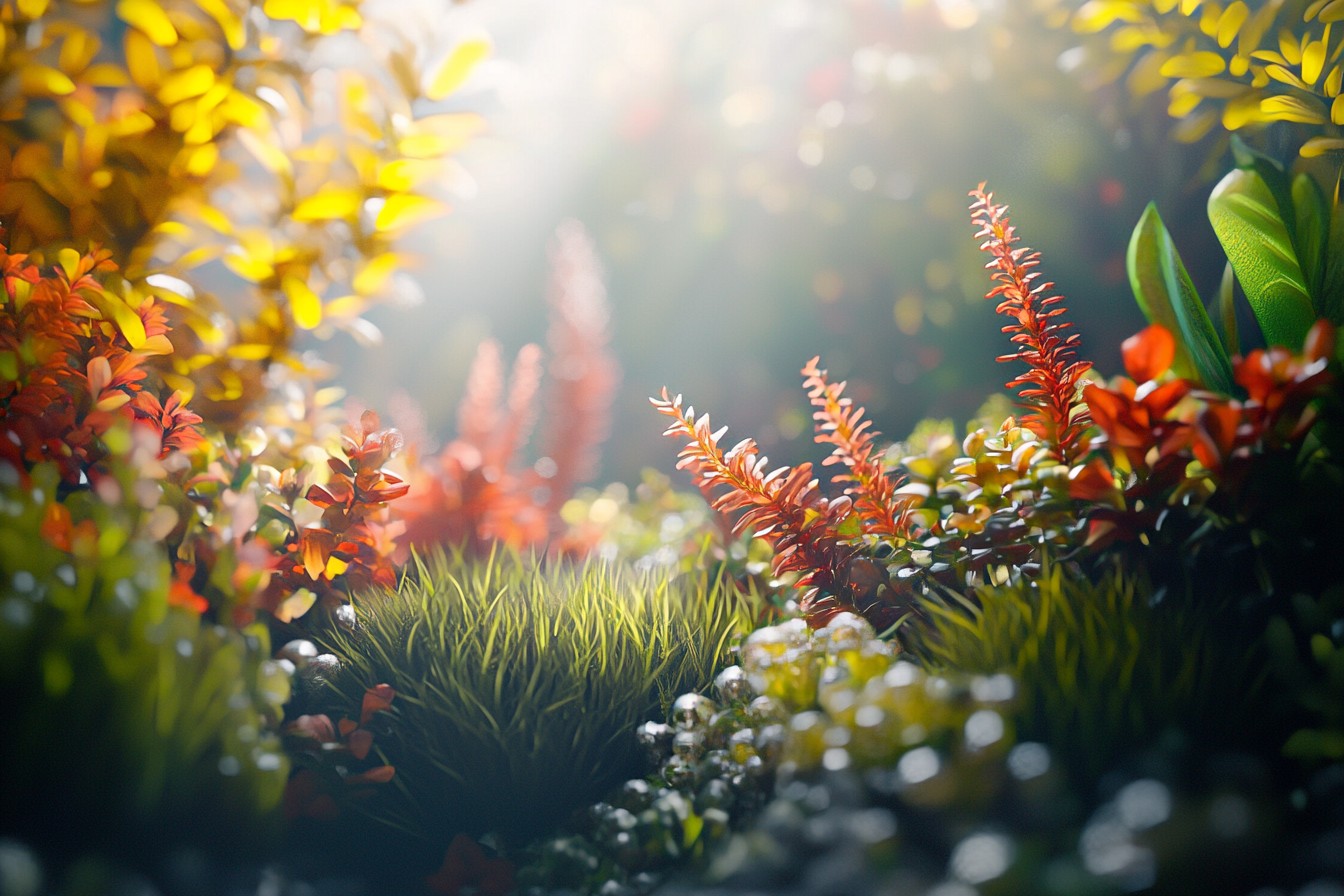
And while I can’t jetset to every corner of the world (though not for lack of trying), I’ve spent years studying specific environments to recreate their essence in glass boxes. My obsession with biotope accuracy started with a spectacular failure. Ten years ago, I attempted to recreate a Southeast Asian peat swamp in a 40-gallon breeder tank.
I ordered the “correct” species, used the “right” substrate mix, and adjusted water parameters according to textbook specifications. The result looked nothing like the reference photos and, more troublingly, the plants struggled despite my meticulous attention to water chemistry. Three months later, I visited a similar habitat in person during a trip to Malaysia.
Within five minutes of seeing the actual environment, I understood my fundamental mistakes. The reference photos I’d studied showed only what was visible above the water line. They couldn’t convey the densely packed leaf litter creating a specific type of decomposition, or the way roots intertwined to create structural stability in the loose substrate.
The plants weren’t randomly distributed—they clustered in specific relationships I had completely missed. That trip transformed my approach to biotope aquascaping. I returned home, tore down my sad approximation, and rebuilt it based on what I’d actually observed.
The difference was striking. Not just aesthetically, but in the health of the system—plants that had previously struggled suddenly thrived when placed in their natural growing positions and relationships. Since then, I’ve created tanks representing ecosystems from six continents.
Each project begins with exhaustive research—scientific papers describing water parameters, local accounts of seasonal changes, and whenever possible, conversations with people who study these environments professionally. I have a marine biologist on speed dial who’s probably tired of my random texts asking about the grain size distribution in specific riverbeds. The Amazon blackwater biotope remains among my most challenging and rewarding projects.
Creating the characteristic tea-colored water isn’t particularly difficult (though maintaining stable pH is trickier than most guides suggest). The real challenge lies in the seasonal thinking required. Amazonian systems experience dramatic fluctuations between wet and dry seasons, with water levels changing by meters in some areas.
Plants and animals have evolved specific adaptations to these cycles that must be incorporated for authentic representation. My Amazonian tank includes a “flood and drain” section where water levels rise and fall on a programmed schedule. The logistics were nightmarish—custom overflow systems, multiple pumps with failsafe mechanisms, endless leak testing.
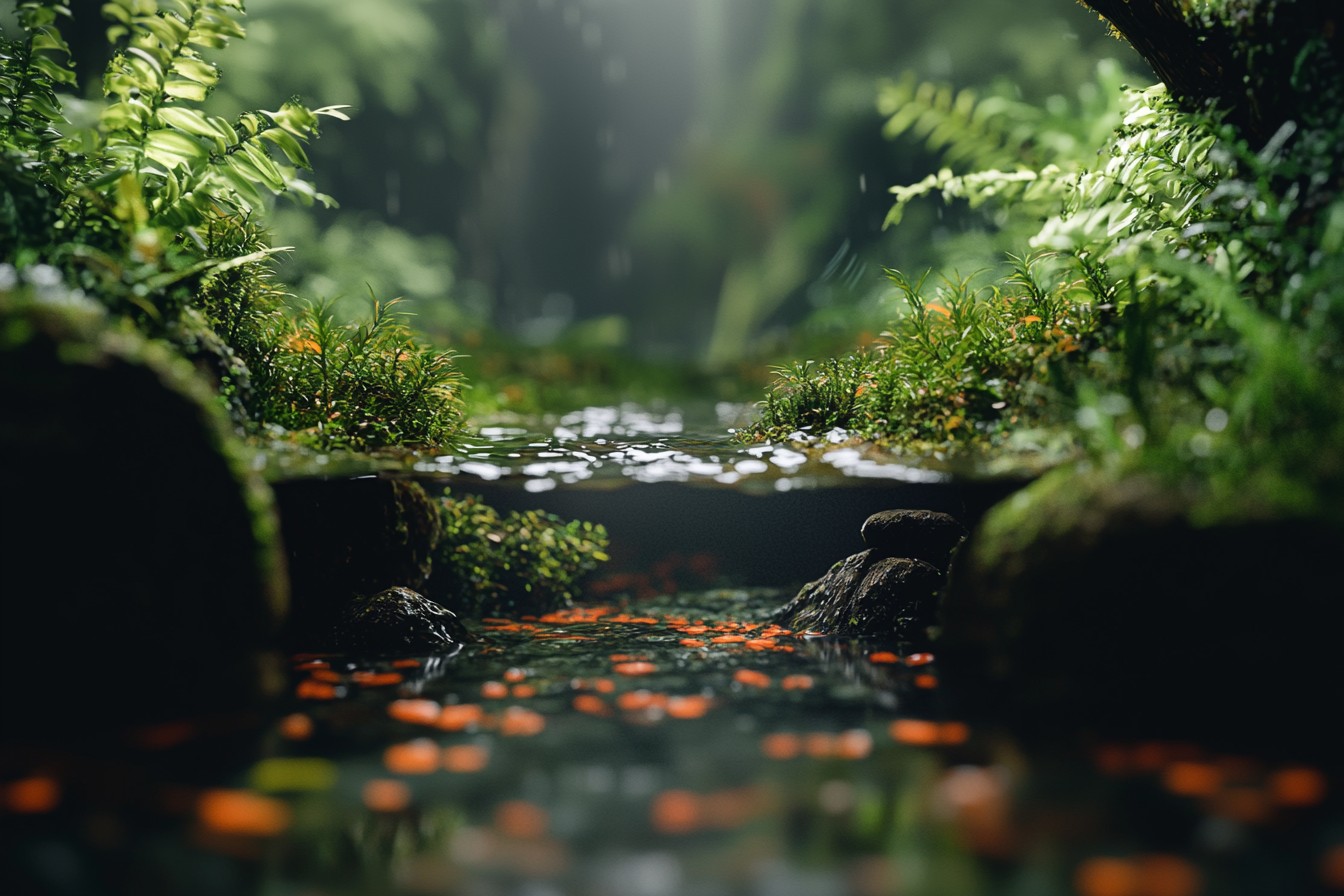
But watching the riparian plants respond to these changing conditions, putting out different leaf structures during “dry” periods, makes the engineering headaches worthwhile. The cardinal tetras display remarkably different behavior patterns during the simulated seasons as well, schooling tightly during the “rainy season” high-water periods and establishing more territorial behavior when water levels drop. African Rift Lake biotopes present an entirely different set of challenges.
The iconic cichlids from Lake Malawi and Lake Tanganyika have been aquarium staples for decades, but they’re typically kept in simplified approximations of their natural habitats. Creating authentic rockwork formations requires understanding the geological processes that formed these ancient lakes. I’ve spent embarrassing amounts of money importing specific rock types to match the mineral composition of these environments, only to discover that the fish care far more about the structural layout than the precise mineral content.
They need particular crevice shapes and territories with multiple escape routes. The hardscape design becomes a complex exercise in fish psychology rather than pure aesthetics. Japanese mountain stream biotopes have become increasingly popular, partly due to the influence of Takashi Amano’s nature aquarium philosophy.
But I’ve found most attempts miss crucial elements of these environments. True mountain streams have incredible water clarity and movement, requiring filtration capacity far beyond what most hobbyists install. The characteristic mosses and small-leaved plants grow in specific patterns determined by current flow—something I learned only after studying actual mountain streams in Hokkaido with a flow meter and underwater camera.
The placement of each stone affects turbulence patterns that, in turn, determine where plants can establish themselves. Get the flow dynamics wrong, and the plants simply won’t grow in natural patterns, no matter how perfect your hardscape looks initially. Southeast Asian peat swamps remain my personal favorite biotope to recreate, despite (or perhaps because of) their significant technical challenges.
The extreme water conditions—pH as low as 4.0, near-zero hardness, tannin concentrations that stain everything they touch—create a highly specialized environment that supports some of the hobby’s most beautiful fish species. The rummy-nose rasboras, licorice gouramis, and chocolate gouramis native to these habitats display their most natural behaviors and vivid colorations only when kept in accurate representations of their native environments. Creating water with precisely the right chemical profile is only half the challenge.
The leaf litter that characterizes these habitats isn’t just decorative—it’s functional. Different leaf types break down at varying rates, releasing specific compounds that benefit certain microorganisms while inhibiting others. I maintain a somewhat embarrassing collection of categorized leaves in my garage, labeled by decomposition rate and tannin content.
My partner has learned not to question why our freezer contains bags of carefully collected oak, catappa, and guava leaves from specific locations. It’s a small price to pay for biotope accuracy. Well, small from my perspective—your mileage may vary.
Temperature fluctuation represents another frequently overlooked aspect of natural biotopes. Most aquarists maintain rock-steady temperatures in their tanks, but natural environments experience daily and seasonal variations that trigger important biological processes. My Rio Negro tributary biotope includes a programmable controller that drops the temperature by 3°C overnight, mimicking the natural cooling these shallow waters experience.
The tetras and pencilfish respond with more natural behavior patterns and, notably, more consistent breeding activity compared to specimens kept at constant temperatures. The substrate composition in accurate biotopes often bears little resemblance to the uniform gravels and sands sold for aquarium use. Natural river and lake beds contain complex mixtures of different particle sizes, organic materials, and mineral components that vary by location.
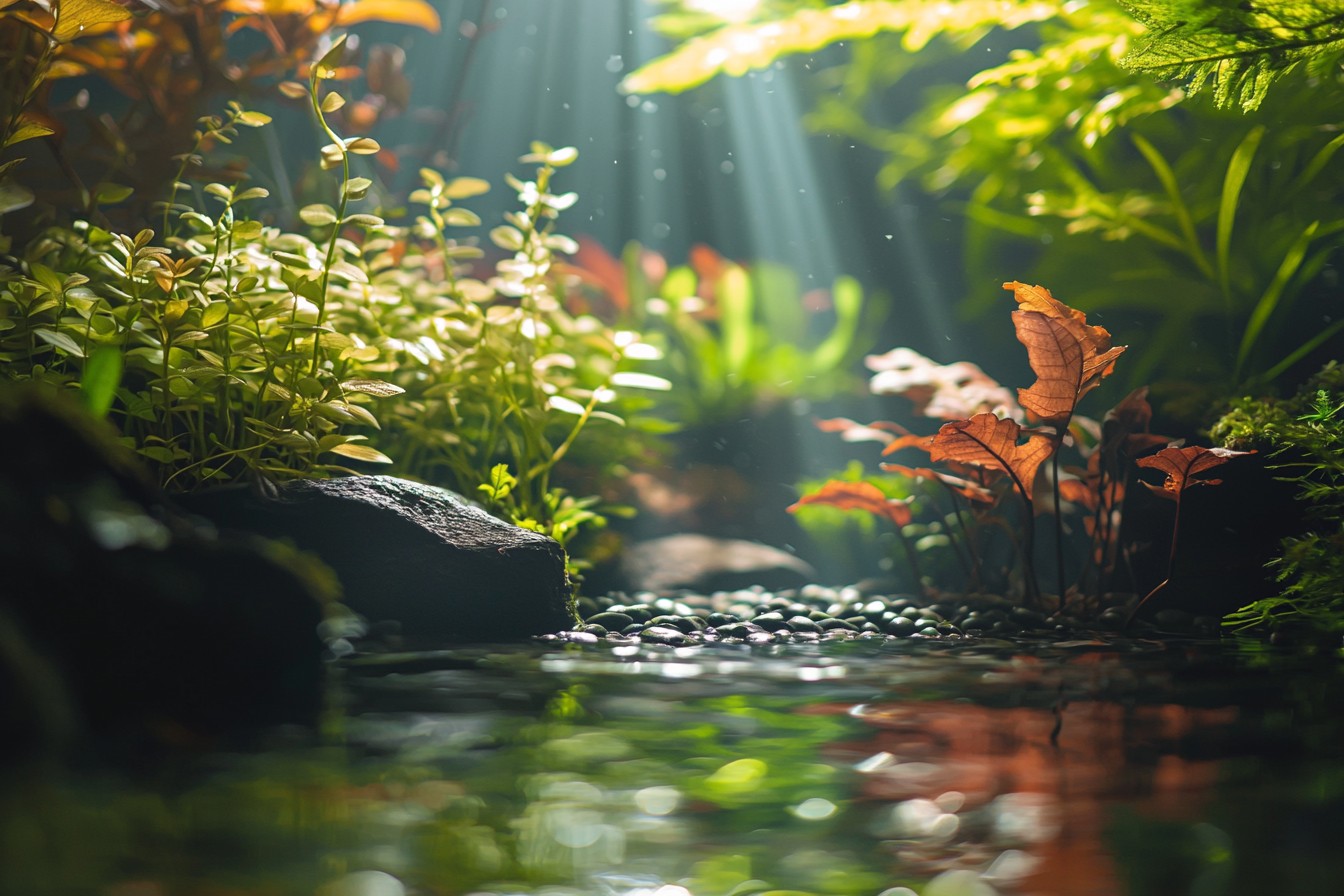
For my Lake Baikal biotope, I created a custom substrate mix with seven different components, each representing a specific element found in the actual lake bed. Overkill? Possibly.
But the specialized snails and amphipods in this system have thrived for years, suggesting the effort was worthwhile. Plant selection for biotope aquascapes requires restraint that doesn’t come naturally to most aquascapers (myself included). Natural environments rarely display the lush, densely planted scenes we associate with aquascaped tanks.
My Pantanal wetland biotope contains just three plant species, sparsely distributed according to patterns I documented during a research trip. The visual impact comes from the particular way these plants grow and interact rather than from species diversity. Fighting the urge to add “just one more interesting plant” has been a lesson in both accuracy and restraint.
Lighting presents particularly interesting challenges for biotope accuracy. Natural aquatic environments receive light with specific spectral characteristics filtered through air, water, and often canopy cover. The intensity and spectrum significantly affect how plants grow and how fish appear.
I’ve experimented extensively with different lighting configurations, eventually building custom fixtures for some biotopes to accurately represent specific lighting conditions. My Southeast Asian peat swamp tank uses a combination of specialized LEDs that recreate the reddish, filtered light characteristic of these environments. The difference in plant growth patterns and fish coloration compared to standard aquarium lighting is remarkable.
The maintenance requirements for different biotope styles vary dramatically. My African Rift Lake setup needs frequent large water changes to maintain appropriate mineral content and remove nitrates, while the blackwater systems require careful monitoring to prevent pH crashes as biological materials decompose. Understanding these differences is crucial for long-term success—a maintenance regimen that keeps one biotope healthy can actively harm another.
Fish selection represents the final and perhaps most important element of authentic biotope aquascaping. Beyond choosing species native to the specific region, consideration must be given to their natural social structures, population densities, and interactions. My Rio Xingu rapids biotope contains a carefully balanced community of plecos, characins, and cichlids in proportions that approximate their natural occurrence.
The resulting behaviors—particularly the territories established and feeding hierarchies—create a dynamic system that evolves over time in fascinating ways. Creating authentic biotope aquascapes isn’t the easiest path in this hobby. It requires more research, more restraint, and often more technical problem-solving than other aquascaping approaches.
But there’s something profoundly satisfying about seeing fish display natural behaviors in environments that genuinely resemble their native habitats. These tanks offer glimpses into distant ecosystems that most people will never have the opportunity to observe in person. For all the technical challenges involved, the greatest reward comes from the moments when everything works exactly as nature intended—when fish spawn in response to simulated seasonal changes, when plants establish themselves in natural patterns without human intervention, when visitors ask “is that really an aquarium?” because the scene looks so organically right.
In those moments, the glass walls seem to disappear, and what remains is a small but honest window into the incredible diversity of aquatic environments that inspire us.
